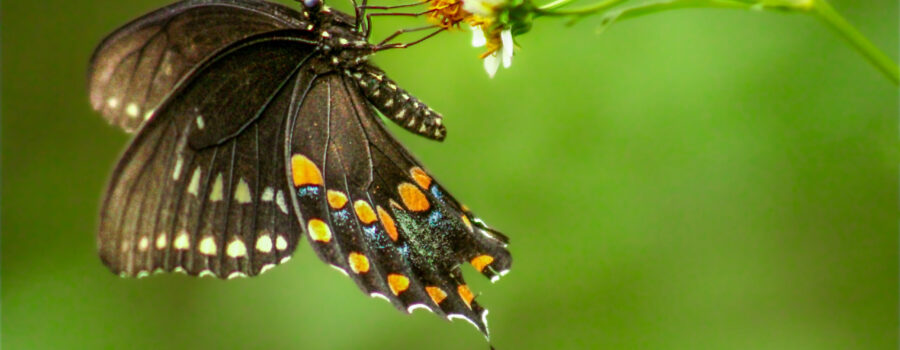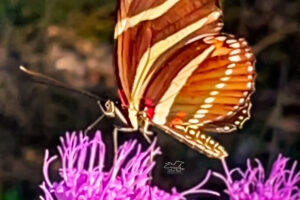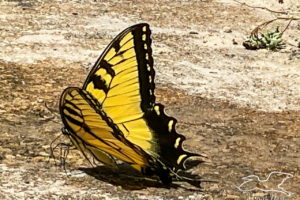Spicebush Swallowtails are Strikingly Colorful Butterflies

Since Hurricane Debby came through and dropped a bunch of rain on us, the fall wildflowers have been blossoming like crazy and the fall pollinators have been showing up to eat. One of the things I enjoy the most every fall is the flowering of the blackjacks. The flowers themselves are pretty, but the pollinators just adore them. Last week when I was outside taking bird photos this spicebush swallowtail butterfly (Papilio troilus ilioneus) flew by. The birds weren’t doing much, so I decided to follow it and had a great time watching it flutter from plant to plant enjoying the nectar.

The spicebush swallowtail looks very similar to the pipevine swallowtail and for a good reason. The pipevine swallowtail is highly toxic to most predators, especially birds, due to its larvae feeding exclusively on pipevine leaves and ingesting the toxin in them. Spicebush swallowtails, however, are not toxic, but by mimicking the pipevine swallowtail, they can fool many predators. Spicebush swallowtail larvae prefer spicebush, but will sometimes eat a few other plants as well (here in Florida, they eat mainly redbay), but none of them are toxic. One other Florida butterfly, the red spotted purple, also resembles the pipevine swallowtail for exactly the same reason.

Spicebush swallowtails can be found in the eastern United States and in southern Ontario. There are two subspecies, one of which can be found almost exclusively in the Florida peninsula. Our Florida subspecies is slightly smaller than the others, and tends to have blue spots on the undersides of the wings that are less well defined and resemble runny paint. The southern subspecies usually has three generations each year, with the eggs from the fall generation overwintering until spring. Further north, there are usually only two generations each year. Spicebush swallowtails generally live either in deciduous woods or in swampy areas. Females can sometimes also be found on open marshy areas and even sometimes in open fields. I enjoy seeing all of the various swallowtail butterflies as they enjoy the flowers that grow here each year. They’re easy to spot between their large size and nearly continuously flapping wings. When they’re around, there’s always action going on in the garden.





Recent Comments